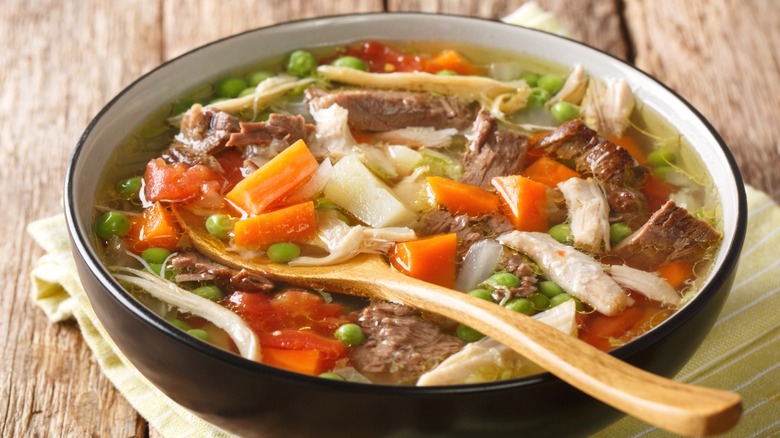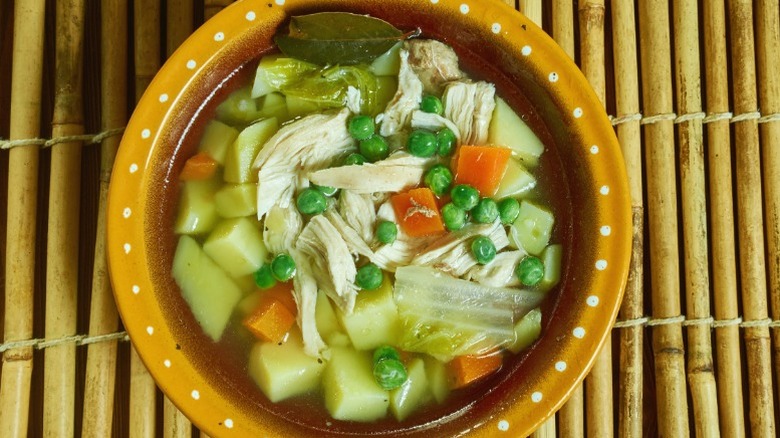The Origins Of Booyah, The Upper Midwest's Favorite Stew
It seems like every part of the United States has its own communal food — the kind of food you can make a whole lot of and invite a bunch of people over for a party or a fundraiser. New England has clam bakes, the South has barbecue, the Southeast has Brunswick stew. And as for the Upper Midwest? They have booyah, of course.
"Booyah" isn't just what you might say when you win a lot of tickets at Dave & Buster's. It's also a stew tradition going back over a century, becoming a staple of social events and fundraisers in Wisconsin, Minnesota, and Michigan (it's almost as entrenched as the popular Friday fish fry). The precise ingredients depend upon the person making it, but in general it's a stew based around some kind of meat (typically beef, pork, and/or chicken) and whatever vegetables one has on hand. (The picture above shows carrots, peas, and potatoes, but other recipes may also include cabbage, green beans, rutabaga, and plenty else.) As is often the case with regionally beloved dishes, there is some fierce debate as to what is and is not acceptable in booyah, with some scorning the inclusion of a tomato base, rice, and/or noodles. But where, exactly, did this dish come from, and why does it have such a funny name? It depends on who you ask.
Many families claim to have invented booyah
One woman, a Wisconsin resident named Monette Bebow-Reinhard, claims that her great-grandfather, Alex Hannon, invented the dish in 1893, at the age of 12, in an attempt to approximate his mother's recipe from Belgium. He roasted a chicken, gathered vegetables like peas and potatoes from their garden, and threw it all in a stew. (His mother's recipe apparently included dumplings, but he didn't know how to make them.) Another Wisconsin resident, the late Lester Rentmeester, did not claim that his father, Andrew, invented booyah — but he did claim that he gave it its name and established its use as fundraiser fodder. A teacher at Finger Road Schoolhouse, in 1906, Andrew held a fundraiser and promised soup in the local newspaper. When asked what kind of soup, he responded "bouillon," by which he and other people of Wallonian Belgian descent may have known the soup; the newspaper wrote it as "booyah."
The truth of the matter, of course, is a little murkier. While the lack of booyah-esque stews in 19th century Belgian cookbooks indicate that it was, in fact, an Upper Midwest innovation, it's unlikely anyone can pinpoint a single inventor. It's more likely that the tradition came from people in the region making stew with the ingredients they had on hand, similar to other communal stews like Kentucky burgoo or even budae jjigae (Korean army base stew). No matter who made it first, they can take comfort that they started a tradition that continues to this day.

